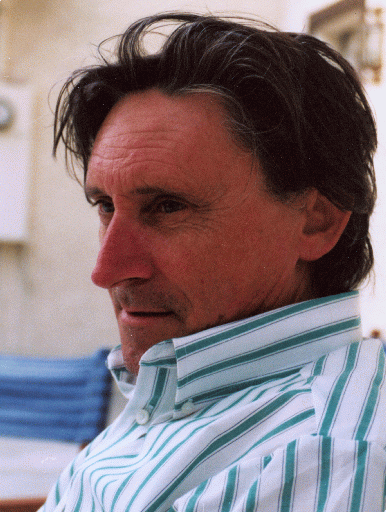
Professor Perry published extensively in many areas of Fluid Mechanics and Aerodynamics in both experimental and theoretical areas. He pioneered many aspects of turbulence studies, flow pattern topology, three dimensional flow separation, and vortex shedding processes. Some of his more significant contributions are described below.
In the study of rough wall boundary layers, Perry and Joubert in 1963 showed, for the first time, that the Hama roughness function is unaffected by adverse pressure gradients in a boundary layer. A new classification of roughness geometry was also proposed by Perry, Schofield and Joubert in 1969.
Professor Perry was internationally renowned for his work on the measurements of fluctuating quantities in turbulence using hot-wire anemometry. Hot wire systems and calibration procedures in the late 60's were inaccurate and unreliable. Many publications relating to a better understanding and improvement of these techniques were summarised in his book "Hot-wire anemometry" published in 1982.
In studying regions of reversed flow and vortex shedding, it was found necessary to "fly" the hot-wire probe through the flow so as to keep velocity vector directions relative to the probe within allowable limits. This, together with flow visualisation techniques, enabled great progress to be made in the study of flow pattern geometry applied to flow separation, vortex shedding and eddying motions. Critical point theory, developed in phase-space trajectory analysis, was applied to the topological study of flow patterns. This was used successfully to study coherent structures in jets and wakes.
In 1986, Perry and Chong made a major contribution to critical point theory. An algorithm was developed which enabled the Navier-Stokes equations to be solved locally using Taylor series expansion to arbitrary orders. This enabled complex three-dimensional steady and unsteady separation patterns with clusters of critical points to be synthesised or solved from boundary conditions. This work has been described by Sherman in a book on viscous flows as "a very remarkable task of computer-aided analysis".
In studying the structure of wall turbulence, Perry and Abell in 1977 discovered the -1 power law for the power spectral density of the streamwise velocity fluctuations in the logarithmic wall region. A region of overlap analysis was devised which also incorporates the Kolmogorov inertial subrange. This study led to the seminal paper by Perry and Chong in 1982 on the "Mechanism of wall turbulence" where wall turbulence was modelled as a random array of horseshoe vortices whose length scale probability density function was such as to give all the observed similarity laws for the mean flow, the broad-band turbulence and spectral behaviour. This work is continuing and has undergone many refinements.
Throughout all of his career as a member of the academic staff at the University of Melbourne, he has spent extended periods at many places such as Caltech, Stanford, Princeton, NASA Ames, Harvard, DFVLR Gottingen Germany, and Cambridge UK. In 1992 he was a Sherman Fairchild Distinguished Scholar at GALCIT Caltech, Pasadena. In 1996 he held the Clark B.Millikan Chair of Aeronautics for distinguished visitors at Caltech, Pasadena and in 1999 held a Rothschild Visiting Professorship at the Isaac Newton Institute for Mathematical Sciences Cambridge University, U.K.
In 1985 Anthony Perry was elected Fellow of the Australian Academy of
Sciences and in 1998 was elected Fellow of the American Physical
Society. The American Physical Society citation reads:
"For physical insights into the behavior of turbulence, structure-based
modeling approaches, elegant use of scaling arguments and inspirational
teaching."
Mechanical and Manufacturing Engineering Department
Engineering Faculty
University of Melbourne